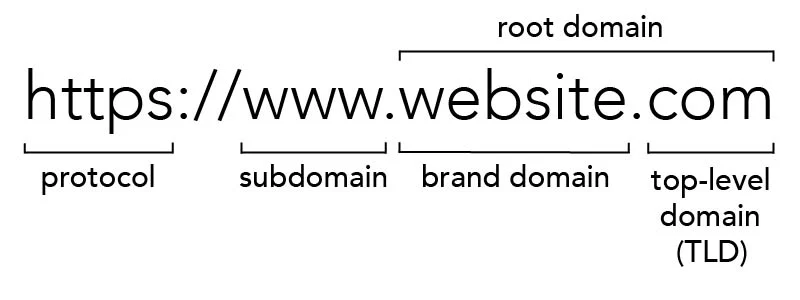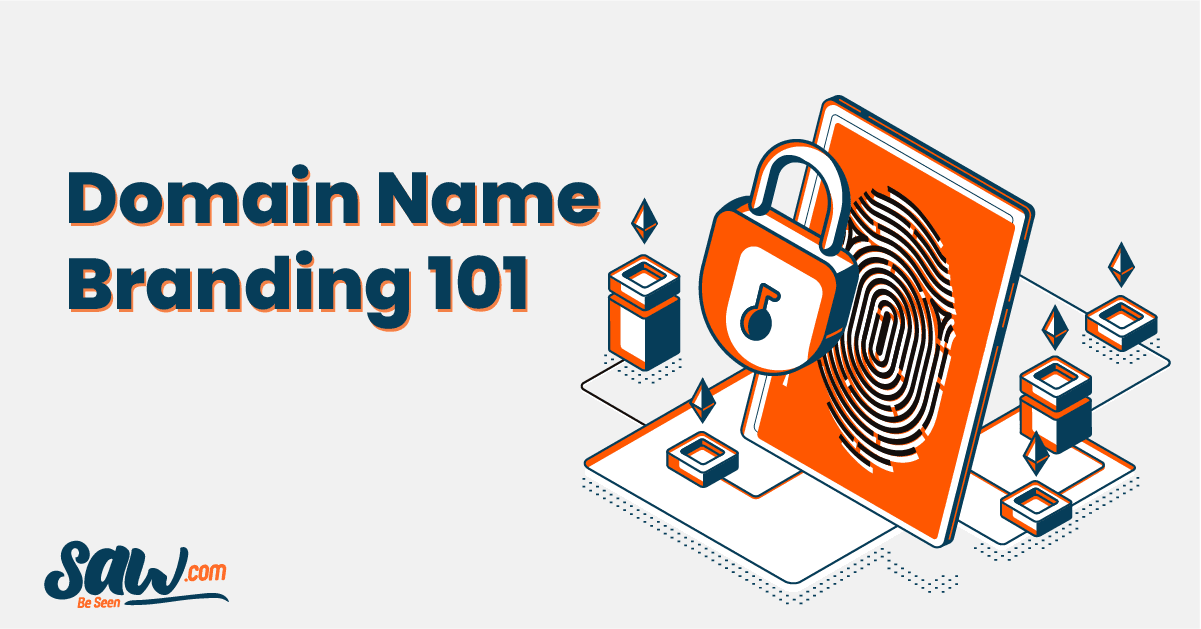Branding is the summation of people’s perception of who you are as a company. This may start with your logo. However, it also means you buy a domain and build a website, your user experience, customer service, social responsibility, community service, advertising, etc. Your business should have a consistent message to your customers.
The better your business gets at branding, the stronger your brand presence. A powerful brand will increase your reach to potential customers, improve credibility, and increase your company’s value.
Here are the domain name branding basics your business should follow.
What is Branding?
A brand refers to a business marketing concept that helps people identify a particular company, product, or individual. Brands are intangible; you can not touch them or see them. However, they shape the customers’ perception of the company and its products. They are also considered one of a company’s most valuable assets. A strong brand ensures its mission – the why, how, when, with, who, and what – is cohesive both internally and externally.
Branding is the marketing material that aids in building brand perception. It includes a distinct name, term, symbol, or logo that identifies a business’s goods and/or services. Branding is crucial when building a business. It allows customers to connect with you and gives your company an edge over your competitors. Brand congruence is another imperative step when running a business and ensures the harmony and consistency of your business.
Branding Basics
Successfully branding a business comes with countless benefits. It establishes your identity, improves recognition, builds credibility, generates new customers, and much more.
Here are branding basics your business can follow to build your brand and strengthen your relationships with customers:
Do Keyword Research

A good marketer does the research. Keywords in your domain can help your website get found.
Marketers are up to date on news and trends. They know their competitors and understand their customers like the back of their hand. (You should understand your customer’s needs and habits and know what they are looking for in a brand and product.) Additionally, they are data-driven, constantly looking at new data from products, customers, surveys, social media engagement, etc.
Make Sure Your Name Isn’t Already Trademarked
Once you have a domain name in mind for your company, make sure it’s not already trademarked. If someone else owns the trademark, you could face legal trouble later. You can conduct a trademark search online or hire a lawyer to help you.
1. Create a Brand Strategy
A company with good branding does not happen overnight. It takes time. When building your brand and improving your marketing efforts, you need to create a plan. Be detailed, organized, and patient.
Many business owners’ entire branding strategy involves paying a graphic artist to create a logo, slap it on their website, and call it a day. Unfortunately, that isn’t going to cut it in today’s competitive digital landscape. Effective branding requires that you have a true understanding of who you are as a business (and who you are not).
This is crucial because this is the only way you can effectively communicate who you are to your potential customers. Once you define who you are as a business and what you want to achieve, all of your branding decisions will flow out of that. In a nutshell, an effective branding strategy answers the following questions:
- What is the goal of my business? That is, what do you stand for as a business? What gap or need are you trying to fill for your customers?
- What are my competitors doing? And what aren’t they doing? Think about what sets your company apart from the competition, and use that to your advantage as you brand your business.
- Who is my target audience? This one sounds easy, but there’s a lot more to it than you might think. It’s more than just choosing a specific group of people – you have to choose the right people for your business. This involves doing research to determine which types of consumers prefer which goods and services. You can do this by conducting surveys or doing secondary research online.
- What is my brand message? To help answer this question, consider what your business does, why it exists, and who it exists for. This will help you determine the personality and values of your business and how to message those ideas to your potential customers.
- Is my brand registered as a domain? Preferably, your brand and domain should match exactly. This means you should check to see if the domain for your brand name is already taken. If so, you will need to buy the domain. Saw.com offers a free consultation for domain broker service.
No matter how deep you go into developing a branding strategy, just know this – a simple logo is never enough.
2. Find Your Niche
As discussed above, a crucial part of branding is defining the right target audience. That is, an effective brand knows exactly who they are communicating with and how they like to be spoken to. For example, if you were to create a men’s clothing company, you’d want to determine what specific type of men you want to target. To know your audience, start simple. You should know their age, their interests, and their socio-economic status. But more important than these characteristics is understanding their wants and needs. Once you understand what your customers need, you can determine how your brand can meet those needs in a way that speaks to them.
3. Design The Look and Logo
Most branding is not about the physical appearance, but it is part of it. The visual aspects of your business are important to building your brand. It is what a customer will think of when your brand is mentioned, the logo or symbol that sets you apart from competitors. It is important to design your logo and/or slogan with your audience in mind.
- What colors fit your brand?
- How can you encapsulate your business into a logo?
- What is eye-catching?
- Is there a slogan that will set you apart?
- What is easy to recognize?
During this part of the branding process, it can be beneficial to hire a design team. They can give you ideas on the visual aspects of your brand and work with you to further design other parts of your business.
4. Be Consistent in Your Messaging
One of the most crucial parts of building a brand is consistency.
When creating your brand strategy, you focus on the specific voice of your brand. Find your voice, define your brand, and stick with it.
Once you know “who you are,” so to speak, you should always communicate with your customers from that same voice or perspective. This applies to everything – website domain, images, words, blog content, and multimedia.
Think about it this way – any message your customers receive from your business should feel as if they’re coming from the same voice. And that voice is the one you conceptualized when you planned your brand strategy. It is the voice that communicates your values and goals and speaks specifically to your target audience.
That voice then needs to be consistent across your entire business – your website, storefronts, employees, social media, etc. Without this consistency, you come off as unprofessional and lazy and risk losing trust with customers. Even worse, if your customers feel they no longer connect with your brand, they’ll take their business elsewhere to someone that speaks to their needs.
How A Domain Name Can Help
We live in the age of the Internet. Everything is online; if you are not, you are in the dark.
If you want your customers to find you, it is imperative you have a website and social media that matches your brand name. A domain is a piece of digital real estate. It is your URL or your virtual street address, the welcome sign to your business. It is how you will be found on the millions of websites and social media handles.

Additionally, it helps you improve credibility, stand out against competitors, and build trust with customers.
When building your business, finding the perfect domain name should always be at the top of your list. It’s the foundation of your online presence.
When finding a good domain name, consider:
- Your business name
- The domain extension you’ll use – .com, .org, etc.
- Memorability
- Availability on social media networks like Twitter, Facebook, and Instagram.
If you find your company name is already registered as a branded domain, you have the legal right to register it if you hold the trademark. If you don’t have the trademark, you’ll either need to see if the current owner will sell it to you or find another great domain name you can use.
To create a new domain registration you can use with your brand identity, try:
- Adding a keyword
- Using a hyphen
- Opting for another generic top-level domain (TLD) extension or using a new domain extension.
Avoid alternative spelling, as this can make it harder for people to remember. You’ll end up sending customers to another online business.
Saw.com Can Help with Domain Name Branding
At Saw.com, we love domains and everything they encompass. With over twenty years of experience in the industry, we have made it our mission to help companies and organizations understand digital assets’ role in the ever-changing internet landscape every step of the way. We specialize in domain acquisition, appraisal, company naming, branding, brand protection, portfolio management services, and more.
No matter the nature, stage, or size of your company, we believe in helping you be seen online, and we pride ourselves in our transparency throughout the entire process. If you are interested in speaking with an expert from our domain brokerage service about buying a domain, contact us! We’ll help you find the right branded domain name for your small business.

